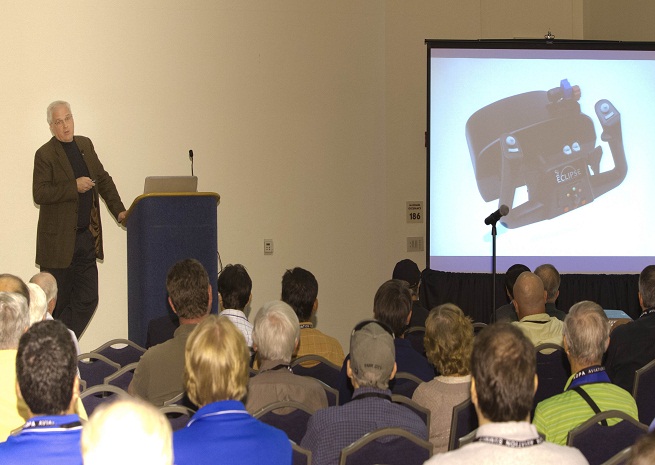Stay sharp with simulation
Seminar at AOPA Aviation Summit describes how to use computer-based simulation for currency and training

Properly using a computer-based simulator doesn’t have to be confusing or complicated. That was the message this week at AOPA Aviation Summit in Fort Worth, Texas, from PC simulator expert Bruce Williams during his seminar, “Using computer-based simulations effectively.”
Williams, who spent many years as part of the team that developed Microsoft Flight Sim, covered the differences between a flight simulator and an aviation training device, various examples of how these devices can be used, and some of the impending changes to the FAA’s guidance.
Focus on the words “flight” and “aviation,” Williams said. A flight simulator, like those used for type ratings, are meant to replicate specific airplanes and their flight characteristcs. Aviation training devices are meant to reinforce concepts and supplement flight training.
Williams said he thinks pilots become too concerned with how closely a simulator or training device replicates an airplane. He covered numerous scenarios where the autopilot flies the device and the pilot simply manipulates radios or the navigation equipment. Holding, DME arcs, and VOR navigation are all great examples, he said.
There’s a difference between logging simulator and aviation training device time, and using that time for a certificate or rating, he explained. That distinction is one of a few proposed changes to the FAA’s Advisory Circular 61-136(a) the agency will release in the next few months.
For more information, check out Williams’ books, Scenario-based Training with X-Plane and Microsoft Flight Simulator, and Microsoft Flight Simulator as a Training Aid.



